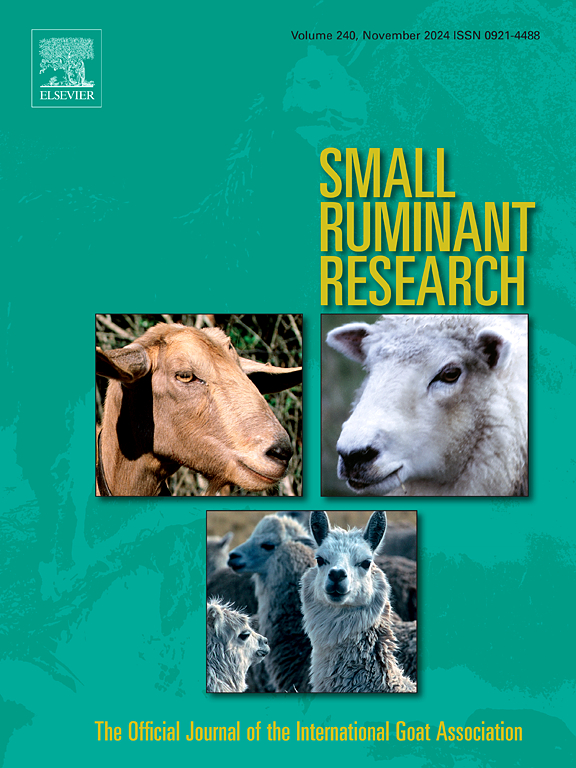X-linked signatures of positive selection and adaptive genetic plasticity shaping high-altitude resilience in Indian Changthangi sheep
IF 1.6
3区 农林科学
Q2 AGRICULTURE, DAIRY & ANIMAL SCIENCE
引用次数: 0
Abstract
Recent genomic studies have focused on understanding the genetic basis of high-altitude adaptation, a classic example of evolutionary response to extreme environments. While most of these studies have concentrated on autosomal regions, the role of sex chromosomes, particularly the X chromosome, in this adaptation has been relatively unexplored. So, in this study, we performed an intensive scan of the X chromosome of Changthangi sheep as well as other Indian and exotic sheep to understand the indications of high-altitude adaptation by exploring population structure, genetic relationships, and signatures of selection on X-chromosome. Our findings reveal a close genetic affinity between Changthangi and Tibetan sheep, suggesting a shared evolutionary history that is similar to the findings of autosomal study. Additionally, we uncovered evidence of gene flow from Deccani and Australian Merino breeds into the Changthangi gene pool. Through a comprehensive analysis of selection signatures, we identified 14 candidate genes and several unannotated loci, out of which nine genes were potentially associated with high-altitude adaptation and these genes are implicated in various biological processes, including fatty acid metabolism, muscle function, potassium channel regulation, transcription, glycogen metabolism, neuronal function, RNA modification, mRNA splicing, synaptic transmission, and hypoxia response. Our study was the first to provide valuable insights into X chromosome genetic mechanisms underlying high-altitude adaptation in Changthangi sheep. These, along with autosomal findings have implications for future breeding strategies aimed at improving the resilience and productivity of Changthangi sheep in harsh environments.
正选择和适应性遗传可塑性的x连锁特征塑造了印度昌昌吉羊的高海拔适应能力
最近的基因组研究集中在了解高海拔适应的遗传基础上,这是对极端环境的进化反应的一个经典例子。虽然这些研究大多集中在常染色体区域,但性染色体,特别是X染色体,在这种适应中的作用相对未被探索。因此,在本研究中,我们对昌昌羊以及其他印度羊和外来羊的X染色体进行了密集扫描,通过探索种群结构、遗传关系和X染色体上的选择特征来了解高原适应的迹象。我们的研究结果揭示了昌昌羊和藏羊之间的密切遗传亲缘关系,这表明它们具有与常染色体研究相似的共同进化史。此外,我们还发现了来自德卡尼和澳大利亚美利奴品种的基因流入昌昌岛基因库的证据。通过对选择特征的综合分析,我们确定了14个候选基因和几个未注释的位点,其中9个基因可能与高原适应有关,这些基因涉及多种生物过程,包括脂肪酸代谢、肌肉功能、钾通道调节、转录、糖原代谢、神经元功能、RNA修饰、mRNA剪接、突触传递和缺氧反应。我们的研究首次为昌昌羊高海拔适应的X染色体遗传机制提供了有价值的见解。这些与常染色体发现一起,对未来旨在提高昌昌羊在恶劣环境下的恢复力和生产力的育种策略具有重要意义。
本文章由计算机程序翻译,如有差异,请以英文原文为准。
求助全文
约1分钟内获得全文
求助全文
来源期刊

Small Ruminant Research
农林科学-奶制品与动物科学
CiteScore
3.10
自引率
11.10%
发文量
210
审稿时长
12.5 weeks
期刊介绍:
Small Ruminant Research publishes original, basic and applied research articles, technical notes, and review articles on research relating to goats, sheep, deer, the New World camelids llama, alpaca, vicuna and guanaco, and the Old World camels.
Topics covered include nutrition, physiology, anatomy, genetics, microbiology, ethology, product technology, socio-economics, management, sustainability and environment, veterinary medicine and husbandry engineering.
 求助内容:
求助内容: 应助结果提醒方式:
应助结果提醒方式:


